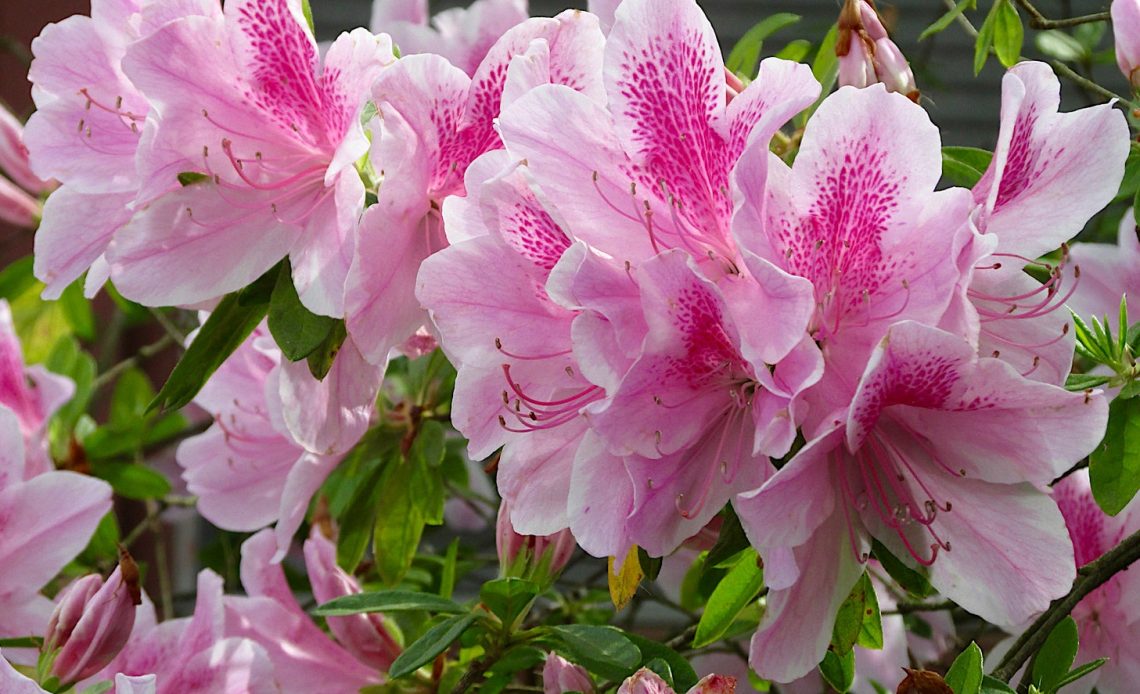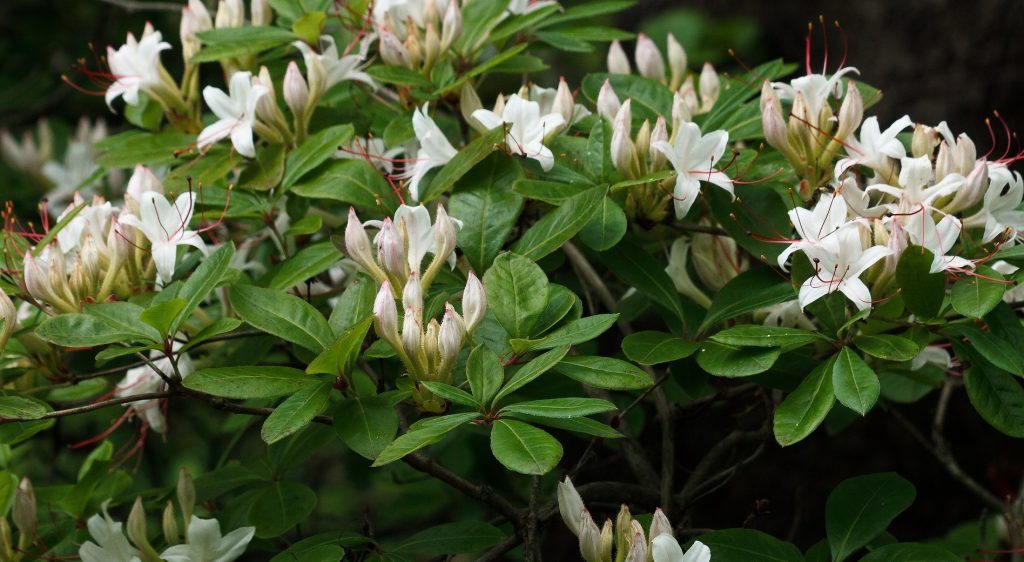

We’re here to help! Wild Yards is a completely free website that is 100% dedicated to helping you create a wildlife-friendly, sustainable yard. Read more
WildYards is reader-supported. When you buy a product through a link on our site, we may earn a comission. Every product is independently selected by our (obsessive) editors and our reviews are unbiased and objective. Read more about our mission or our privacy policy.
Most gardeners want to attract more pollinators to their gardens, and few pollinators are more delightful than hummingbirds. These unique, nectar-drinking, hovering birds make for a joyous sight to any nature lover. But many gardeners find themselves wondering just what flowers and shrubs they can plant that might attract hummingbirds to their yards. For example, do hummingbirds like azaleas?
Hummingbirds love azaleas, particularly Rhododendron arborescens, or sweet azalea. These shrubs not only provide abundant nectar for hummingbirds, but they also harbor pests like caterpillars that hummingbirds love to eat. They’re not just high protein snacks for adult hummingbirds, but also a favored food for nestlings.
Why are hummingbirds attracted to Azaleas?
Azaleas are shrubs in the rhododendron genus and contain both deciduous and evergreen species. They have been favored garden plants and selectively cultivated for centuries, resulting in over 10,000 different varieties.
Azaleas have become symbols of the return of spring in the southeastern US, and many localities in North America and Asia have annual azalea festivals celebrating the beautiful, fragrant flowers.
One of the reasons they have been so treasured by gardeners is that the flowers last for weeks at a time, resulting in a colorful garden throughout the summertime. The blossoms come in varying shades of red, pink, orange, purple, white, or yellow, and cover almost the entirety of the shrub.
All of these characteristics make azalea flowers loved by hummingbirds as well as gardeners!
Azaleas come in the exact colors that hummingbirds love to investigate (primarily red, but purple, orange, pink, and yellow will do just fine). The long flowering season and the abundant amount of blossoms mean azalea bushes provide abundant and reliable food sources throughout the flowering season. The funnel-like shape of the flowers allows perfect access for the thin, curved bills and long tongues of hummingbirds.
Sweet azalea, also called smooth azalea, is a particularly attractive shrub for hummingbirds. This particular species is native to the eastern United States and is known for the delicious fragrance of its flowers, which is compared to sweet cinnamon.
The shrubs bloom from April through to September, and the flowers are white or pink with red stamens. The attractive foliage will also turn deep red or purple come the fall.
Sweet azaleas are also attractive to multiple insect species, including many butterflies which like to lay their eggs on the leaves. This may not sound like great news, but the resulting caterpillars are a favorite high-protein food source for many species of birds to feed their young, and this includes hummingbirds!
All of these features make a sweet azalea bush a great choice to attract hummingbirds to your yard. In fact, the Audubon Society has named sweet azalea as one of America’s most hummingbird-friendly native plants.

How do I grow azaleas?
Azaleas are a delight to many gardeners in part because they like to grow in conditions many other plants do not enjoy. They prefer sandy, acidic soil and need very little in the way of fertilizer. Their roots are very shallow, and so while they prefer moist soil they can be prone to water stress.
Many species prefer shady, more wooded areas, though some of the deciduous varieties (including sweet azalea) will also thrive in full sun. If planted in a sunny part of your yard, however, they will need regular watering, but a greater number of flowers will be your reward.
Don’t dismiss the idea of planting your azalea in the shade, however; the shrub will be taller and fuller, and its blossoms will last even longer. And it’s far from the only shade plant that hummingbirds love.
Also, make sure you’ve got space for your new garden inhabitant. Native azaleas can grow up to twenty feet in height given the right conditions, though in most gardens they will not get above six feet. There are also dwarf varieties of azalea available in most nurseries, and they will stay a much more manageable two or three feet in height.
Are azaleas dangerous?
While azaleas are great for hummingbirds and other pollinators, all parts of this plant are toxic to most mammals. This includes dogs, cats, humans, and livestock. If you keep horses, goats, sheep, or cattle, you will want to keep azaleas well away from where casual grazing or browsing might pick up a leaf or flower. This is a shrub you will want to teach small children to avoid.
If you are a beekeeper, you also might want to think twice about planting an azalea. Azaleas are so toxic that even honey made from their nectar can cause life-threatening symptoms in humans. It’s even been claimed that sending a bouquet of azaleas in a black vase was considered a death threat. So maybe pick another flower to send to your sweetie!
However, if you don’t have small kids, working honeybees, or grazing animals, and want masses of colorful flowers that will attract pollinators like hummingbirds to your yard, an azalea might be just the shrub you’re looking for.
If the toxic label is too intimidating, don’t despair; many other hummingbird-friendly shrubs might suit your garden. Hummingbirds love butterfly bushes, for example, although some areas consider them an invasive species.
Another invasive bush, rose of sharon may coax hummingbirds into your yard, but as with butterfly bush, you should consult your local laws.
If you live in a more tropical area, Dipladenia might be just the thing for your hummingbird garden.
Finally, if you want a native, non-toxic (even edible) shrub to entice local hummingbirds, a crepe myrtle will not disappoint.
Is it worth growing azaleas?
An azalea bush will add wonderful colors and fragrance to your garden but is likely to take up a lot of space. They will produce an abundance of flowers, and an abundance of flowers will mean more chances of an abundance of hummingbirds.
Just remember that while these beautiful bushes are loved by hummingbirds and other pollinators, they can be dangerous to people and other animals!
